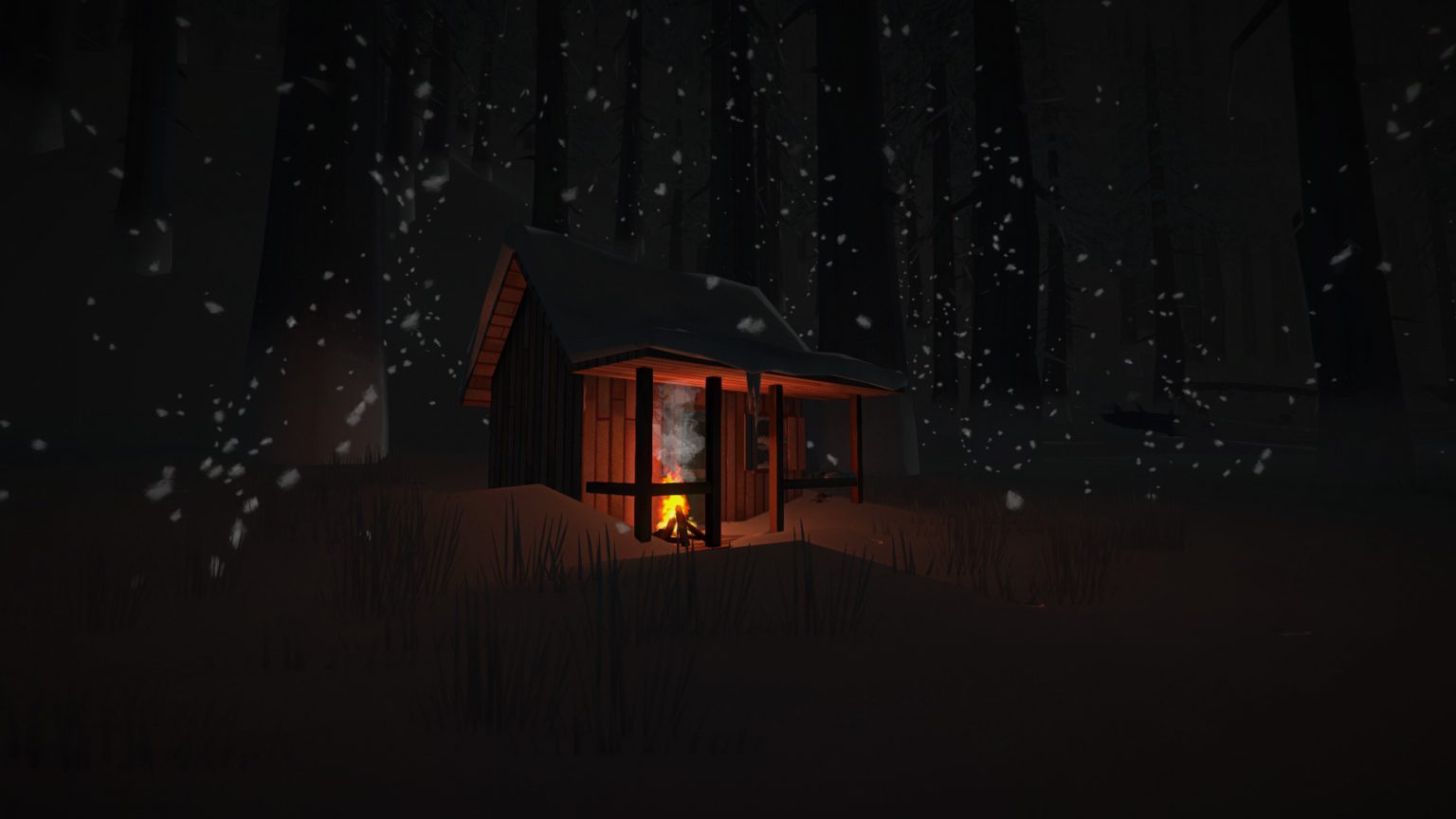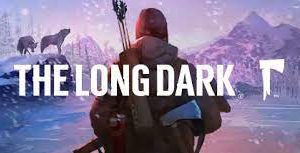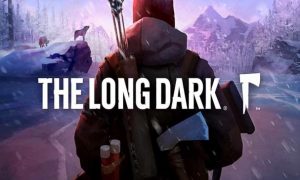In case you’re attempting to comprehend the custom settings in The Long Dark, this diagram will assist keep with following of what every class implies.
Custom settings were an enormous success for The Long Dark. I play there only, selecting to free myself of Cabin Fever, and even wrench the trouble settings up past Interloper now and again. The issue is, I’m regularly attempting to make sense of what mode a custom setting looks like. Is my free thing accessibility like Voyager or Stalker? Are my Wolf battles like Stalker or Interloper? With this guide, you can monitor which standard trouble each setting integrates with, and make your own custom situation with certainty.
Custom Settings
| Game Start | Pilgrim | Voyageur | Stalker | Interloper |
| Baseline Resource Availability | Very High | High | Medium | Low |
| Starting Time of Day | Noon | Random | Random | Random |
| Starting Weather | Clear | Random | Random | Random |
| Indoor Spawns Permitted | Yes | Yes | No | No |
| Survivor Monologue | Yes | Yes | Yes | Yes |
- Baseline Resource Availability: This modifies the base availability of resources. This helps to determine the level of challenge you will experience. When set to Low, certain items will not spawn, such as the Rifle, Revolver, Hunting Knife, and Hatchet. Players would need to craft an Improvised Knife and Improvised Hatchet at a Forge. A Medium setting will allow these items to spawn, but still keep loot somewhat scarce, allowing for a more balanced challenge.
- Starting Time of Day: You may choose the time of day you want to start the game. Keep in mind you will have minimal clothing, so starts late at night or in the early morning can be more challenging. You can also leave it randomized.
- Starting Weather: Choose the weather conditions you wish to experience when you spawn in, or leave it randomized.
- Indoor Spawns Permitted: This setting will let the player choose if an indoor spawn is possible, but it does not guarantee one. Lower difficulties allow indoor spawns, while higher difficulties do not.
- Survivor Monologue: This toggles audio cues from the character that can provide vital information to players. It can be annoying to be reminded of your condition when you’re already aware, but this is generally good setting to leave on.
| Environment | Pilgrim | Voyageur | Stalker | Interloper |
| Length of Day Multiplayer | 1x | 1x | 1x | 1x |
| Weather Variability | Low | Medium | High | Very High |
| Blizzard Frequency | Low | Medium | High | Very High |
| World Gets Colder Over Time | None | Low | Medium | High |
| Wind Variability | Medium | Medium | Medium | Medium |
| Aurora Frequency | Medium | Medium | Medium | Medium |
| Fire Overcomes Ambient Air Temp | Yes | Yes | No | No |
- Length of Day Multiplier: Changing this setting will modify how long it takes to play through 24-hour period in The Long Dark. By default (1x), one in-game day is equal to two hours. Setting this higher (2x, for example) will slow down in-game time, increasing the number of real hours required to experience an in-game day.
- Weather Variability: Will determine how often the weather will change. The lower the setting, the less likely to have a perfectly good day turn into a raging blizzard. At higher difficulties, the weather is more likely to drastically change with little warning.
- Blizzard Frequency: Determines how frequently a blizzard will hit. If you’re looking for a chill experience with lots of exploration, go with a lower setting. Blizzards can also be turned off entirely if you simply cannot stand them.
- World Gets Colder Over Time: This setting will determine if the temperature outside will drop as the playthrough progresses. This can provide for a more challenging end-game experience, as players will need high-quality clothing to stay warm as the days pile up. This setting can also be turned off.
- Wind Variability: Adjusts how frequently the wind changes direction. By default, all difficulties are set to medium. Lowering this setting means the wind is less likely to change direction. When the wind changes direction, it can impact player temperature and even cause campfires to blow out.
- Aurora Frequency: Another setting where all difficulties are set to medium. This will alter how often the aurora appears at night. When the aurora appears, certain in-game mechanics change, such as laptops with lore being active, lights turning on, and animal behavior.
- Fire Overcomes Ambient Air Temperature: When turned on (Yes), all fires will burn above freezing, meaning the player will be able to warm up. When off (No), a fire may not provide enough heat to allow players to warm up depending on the fuel used and the temperature in the immediate area.
| Health | Pilgrim | Voyageur | Stalker | Interloper |
| Calorie Burn Rate | Low | Medium | High | Very High |
| Thirst Rate | Low | Medium | Medium | High |
| Fatigue Rate | High | High | High | Medium |
| Freezing Rate | Low | Medium | High | Very High |
| At-Rest Condition Recovery Rate | High | High | High | Medium |
| Condition Recovery Rate | High | High | High | Medium |
| Hypothermia Recovery Time | Low | Medium | High | Very High |
| Frostbite Rate | Low | Medium | High | Very High |
| Cabin Fever | No | Yes | Yes | Yes |
| Intestinal Parasites | No | No | Yes | Yes |
| Dysentery | Yes | Yes | Yes | Yes |
| Sprains | Yes | Yes | Yes | Yes |
| Food Poisoning | Yes | Yes | Yes | Yes |
| Broken Ribs | Yes | Yes | Yes | Yes |
| Rest as a Resource | Yes | Yes | Yes | Yes |
| Fires Prevent Freezing | Yes | Yes | No | No |
| Wake Player When Freezing Near a Fire | Yes | Yes | No | No |
| Birch Bark Tea Crafting | Yes | Yes | Yes | Yes |
- Calorie Burn Rate: Will determine how quickly you become hungry. When this setting is lower, players will find it’s quite easy to keep their calories up. When this setting is lower, it’ll be more difficult to prevent starvation.
- Thirst Rate: How quickly the player loses their hydration meter. The higher this setting, the more water required in a day to prevent dehydration.
- Fatigue Rate: Determines how quickly a player becomes exhausted and will need to sleep. This is set to medium for all difficulties aside from Interloper, which requires players to stay on the move more.
- Freezing Rate: When set lower, colder temperatures will not cause players to start freezing as quickly. When higher, players will start to freeze more quickly, meaning they are unable to stay outside as long in colder conditions.
- At-Rest Condition Recovery Rate: Modifies how much condition is restored for each hour of rest. When set to High, players can recover more health while sleeping, assuming all their core needs are met.
- Condition Recover Rate: How much condition is recovered when all core needs are met. Higher settings make the game easier as players recover condition much faster.
- Hypothermia Recovery Time: How long it takes to recover from Hypothermia. Lower settings mean a faster recovery, whereas higher settings mean it takes longer to recover from the Hypothermia condition.
- Frostbite Rate: Determines how long it takes to get Frostbite. A lower setting means it will take longer to get Frostbite on parts of the character’s body that are exposed to the cold.
- Cabin Fever: When the player suffers from Cabin Fever, they may not sleep indoors for 24 hours. This condition can activate when a player is spending too much time indoors. Turning Cabin Fever on makes the game more difficult.
- Intestinal Parasites: When on, eating Wolf or Bear meat cooked with less than Level 5 Cooking skill can cause Intestinal Parasites. When off, players can eat any type of meat they want without fear of this affliction.
- Dysentery: Determines if players can get Dysentery from drinking non-potable water. Leaving this off would make the game drastically easier given the role hydration plays in the game.
- Sprains: When on, players can sprain limbs while traversing steep terrain, or from some animal attacks. By default, all difficulties leave this setting turned on.
- Food Poisoning: Affects whether players can get Food Poisoning from eating low-condition items. This is on by default for every default difficulty in The Long Dark.
- Broken Ribs: Sets whether the Broken Ribs ailment can be applied to the player. Currently, players can only get broken ribs from a Moose attack.
- Rest as a Resource: If turned on, players will wake up when fully rested, and be unable to sleep when fully rested. When off, players can sleep as much as they want, even if their energy levels are maxed out.
- Fires Prevent Freezing: When on, players can become colder sitting near a fire, but they can’t ever begin freezing. This makes the game easier, and is a setting disabled on higher difficulties.
- Wake Player When Freezing Near a Fire: When on (Yes), players will wake up if they start freezing while sleeping near a fire. This stops you from freezing to death in your sleep while near a fire.
- Birch Bark Tea Crafting: This allows players to craft Birch Bark Tea, which can provide hydration and some calories when consumed. Consuming it will restore some condition for two in-game hours.
| Gear | Pilgrim | Voyageur | Stalker | Interloper |
| Item Decay Rate | Low | Medium | High | Very High |
| Loose Item Availability | Very High | High | Medium | Low |
| Empty Container Chance Modifier | None | None | Medium | High |
| Stick, Branch, and Stone Respawn Frequency | Very High | High | Medium | Low |
| Starting Gear Allocation | Very High | High | Medium | Low |
| Rifle Availability | Yes | Yes | Yes | No |
| Revolver Availability | Yes | Yes | Yes | No |
| Harvestable Plant Availability | High | High | High | High |
| Reduce Container Item Density | None | None | Low | High |
- Item Decay Rate: Changes how quickly items lose condition over time. A low setting means you’re more likely to find higher-condition food later in a playthrough.
- Loose Item Availability: Affects how much gear spawns outside of containers in the game world. You’ll find less loose gear with a lower setting.
- Empty Container Chance Modifier: Modifies the chances a container will be empty. Higher settings mean less overall resources in the world. Even when set to off (None), some containers may still be empty.
- Stick, Branch, and Stone Respawn Frequency: Changes how often these resources will respawn in the world. At higher settings, you’ll find more of these resources on the ground.
- Starting Gear Allocation: Higher settings mean the player will spawn into the world with more and better gear. Lower settings mean less and lower-quality gear to start with.
- Rifle Availability: Sets whether the Rifle can spawn into the game or not.
- Revolver Availability: Sets whether the Revolver can spawn into the game or not.
- Harvestable Plant Availability: All difficulties are set to High by default, so adjust the setting (lower for less, higher for more) to suit your desired plant availability.
- Reduce Container Item Density: Modifies the amount of gear found in a container that is not empty. You can still find empty containers, but ones that contain gear will be influenced by this setting.
| Wildlife Spawns | Pilgrim | Voyageur | Stalker | Interloper |
| Fish Spawn Chance | High | High | High | Medium |
| Wolf Spawn Chance | Low | Medium | Very High | High |
| Timberwolf Spawn Chance | Low | Medium | Very High | High |
| Deer Spawn Chance | Very High | High | Medium | Low |
| Rabbit Spawn Chance | Very High | High | Medium | Low |
| Bear Spawn Chance | Low | Medium | Very High | High |
| Moose Spawn Chance | Low | Medium | Very High | High |
| Time to Wildlife Respawn | Medium | Medium | Medium | Medium |
| Reduce Wildlife Population Over Time | None | Low | Medium | High |
| Wolf Spawn Distance | Medium | Close | Close | Close |
| Predator Grace Period | No | Yes | No | No |
- Fish Spawn Chance: Affects how many fish you will catch while fishing.
- Wolf Spawn Chance: Helps determine the Wolf population in The Long Dark. Lower settings mean less wolves.
- Timberwolf Spawn Chance: Sets how many Timberwolves will spawn into the game world. Higher settings mean more Timberwolves.
- Deer Spawn Chance: Changes how many Deer will be found in the game. Higher settings mean more Deer, and thus less trouble finding food.
- Rabbit Spawn Chance: Alters how many Rabbits will spawn into the game. As with the previous settings, higher means more.
- Bear Spawn Chance: Will determine how many Bears you find in the game, which can impact how easily players can traverse the world.
- Moose Spawn Chance: Decides how many Moose will appear in the world. Moose are rare as is, so a higher setting means less difficulty finding a Moose.
- Time to Wildlife Respawn: Wildlife in The Long Dark have set respawn times. A lower setting means wildlife will respawn from death faster than a higher setting.
- Reduce Wildlife Population Over Time: Alters how much wildlife populations decline as the days pass. For a greater challenge, set this higher.
- Wolf Spawn Distance: If set to Close, Wolves can spawn closer to a player exiting a building. If set to Far, Wolves will not spawn close to players exiting a building.
- Predator Grace Period: When on (Yes), players will not see predators (Wolves and Bears) for 24 hours after beginning a new game.
| Wildlife Behavior | Pilgrim | Voyageur | Stalker | Interloper |
| Wildlife Smell Range | Low | Medium | High | High |
| Scent Increase from Meat and Blood | Medium | Medium | Medium | Medium |
| Passive Wildlife | Yes | No | No | No |
| Wildlife Attacks During Rest | No | Yes | Yes | Yes |
| Wolf Fear | Medium | Medium | Medium | Medium |
| Timberwolf Morale | High | Medium | Low | Low |
| Wildlife Detection Range | Medium | Medium | Medium | Medium |
- Wildlife Smell Range: Modifies the range that animals can smell the player. A lower setting means wildlife cannot smell the player as easily, allowing players to get closer to animals without being detected (by scent).
- Scent Increase from Meat and Blood: Affects how strong a player’s scent is based on if they’re carrying raw meat, guts, or blood. Higher means animals can detect a player carrying raw meat, guts, or blood from further away.
- Passive Wildlife: If on (Yes) wildlife will not attack the player unless it is provoked. Basically, if you shoot a Bear or Moose, it might attack you, but otherwise you’re safe with this setting enabled.
- Wildlife Attacks During Rest: Affects whether outdoor sleep could be interrupted by an animal attack. This setting is on (Yes) for all difficulties besides Pilgrim, which has Passive Wildlife on anyway.
- Wolf Fear: Determines how likely a Wolf is to flee from the player during an encounter, making Flares, Torches, and Stones more effective. All difficulties use Medium by default.
- Timberwolf Morale: Higher settings mean Timberwolf morale will decline faster, whereas a lower setting means it will be harder to scare Timberwolves away using weapons and items.
- Wildlife Detection Range: If set to Far, players can get closer to wildlife without being detected, meaning easier hunting and less chance of being attacked by Wolves and Bears.
| Wildlife Struggle | Pilgrim | Voyageur | Stalker | Interloper |
| Struggle Bonus | High | Medium | Low | None |
| Struggle Condition Damage Modifier | None | None | None | High |
| Struggle Clothing Damage Modifier | Low | Low | Low | High |
| Struggle Damage Severity | Low | Medium | High | Very High |
- Struggle Bonus: High means you will have an easier time fighting off a struggle with a Wolf. Low or None means a harder time fighting off a Wolf.
- Struggle Condition Damage Modifier: None or Low means less damage is taken during a struggle. A higher setting means it’s easier to take massive damage (or die) during a struggle.
- Struggle Clothing Damage Modifier: Modifies how much damage your clothing takes during a struggle. Lower means less, and higher means more. Note that even setting this to None doesn’t mean zero damage to clothing in a struggle.
- Struggle Damage Severity: Affects the types of damage taken from struggles, such as blood loss, clothing damage, sprains, and more. High means worse afflictions are more likely.
Now that you’ve got a firm grasp of the custom settings and what each one means, be sure to visit The Long Dark topic on Guide Stash for more high-level content to help you survive the quiet apocalypse.

















